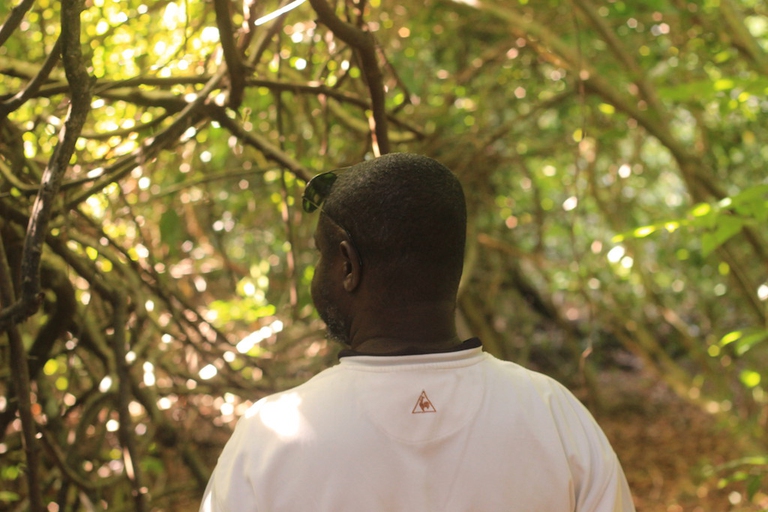
Niseko, Toya-Usu and Shiraoi are three Hokkaido destinations for travellers who want to feel close to the communities they’re visiting.
About 800 years ago, the Digo people were pushed out of Somalia and Northern Kenya following ethnic tensions. They migrated to the South Coast of Kenya to establish themselves deep within the forest. There, they built Kayas, meaning ‘home’ or ‘village’ in the local dialect. In every Kaya, you could find huts, graveyards, and a
About 800 years ago, the Digo people were pushed out of Somalia and Northern Kenya following ethnic tensions. They migrated to the South Coast of Kenya to establish themselves deep within the forest. There, they built Kayas, meaning ‘home’ or ‘village’ in the local dialect. In every Kaya, you could find huts, graveyards, and a ‘fingo’, a burial site for magical objects to protect them from calamities. The fingo is where they went for prayers and ceremonies.
There are today over 60 Kayas in Coastal Kenya, but since the 18th century, local communities have moved out of them to live in surrounding villages, continuing to use the sacred forest as their primary place of worship. Kaya Kinondo remains of great historical and cultural importance.
But Kayas have long been under threat. With the arrival of Christianity and Islam, traditional religions were looked down upon. Also, being close to the beach, the forest was seen as a prime location for new developments. Moreover, it was seen as a great hunting ground for antelopes, bush pigs, and the like, and the perfect space to provide resources such as timber and charcoal.
The Kaya Kinondo area is a declared national monument © Sarine ArslanianSince 1993, however, following numerous pleas by the elders, Kaya Kinondo has been registered as a national monument and it has become illegal to exploit or develop the area. Until today, they use their own system of governance within each Kaya. They are all managed by a distinct council of elders with a spiritual leader at the head.
Poaching remained a challenge for much longer as no one was there to guard the forest. Trying to think of a way to protect the forest while also earning from it, community members came up with the idea of a Community Ecotourism Project in 2001. This was immediately supported by the national museums of Kenya and WWF.
This fascinating ecotour is a pilot project. For the first time, Kayas that were exclusive zones accessible to indigenous people only opened up to a greater public. Community members took on jobs such as guide, project manager or forest guard.
The project may not be financially sustainable yet but Kaya Kinondo has certainly become a learning institution. Visitors can learn about the beliefs and traditions of the Digo people while exploring the forest grounds.
Today, there are 11 Kayas that are listed as UNESCO National Heritage Sites. Kaya Kinondo is not one of them since it is partially grabbed, but it is thanks to the ecotourism project at Kaya Kinondo that the others gained in exposure, attracting worldwide attention.
The project is also a great conservation initiative. There is minimal destruction since, according to their beliefs, spirits would attack anyone destroying nature. Insects are not disturbed. Even fetching firewood is not allowed according to local traditions. If a branch of a tree or the tree itself falls, it is simply left to rot, remaining part of the ecosystem. Needless to add, hunting is not allowed.
The Digo people show us a beautiful example of environmental conservation and cultural preservation managed at the grassroots level.
Siamo anche su WhatsApp. Segui il canale ufficiale LifeGate per restare aggiornata, aggiornato sulle ultime notizie e sulle nostre attività.
![]()
Quest'opera è distribuita con Licenza Creative Commons Attribuzione - Non commerciale - Non opere derivate 4.0 Internazionale.
Niseko, Toya-Usu and Shiraoi are three Hokkaido destinations for travellers who want to feel close to the communities they’re visiting.
Disabled travellers need not fear Japan. Accessible Japan founder Josh Grisdale tells us about his commitment to opening the country’s doors to everyone.
Antarctica is becoming more accessible, so much so that tourism has seen a 53 per cent increase in the last four years. And climate change is on of the reasons people visit the frozen continent.
Alpinism has officially been added to the UNESCO Intangible Cultural Heritage (ICH) list. Its candidacy had been jointly submitted by France, Italy and Switzerland.
The word biodiversity recalls lush forests inhabited by countless animal and plant species. Life, thanks to its blind determination, blossoms in a myriad of stunning environments: from deserts and volcanoes to mountains covered up by perennial ice. The most extreme and inhospitable ecosystems can host animals and plants that adapted in the name of survival.
Not just skyscrapers: the Japanese capital is a much greener city that most people imagine. Let’s discover the best Tokyo parks and gardens from autumn to spring, and anytime in between.
Vienna will amaze you with the magnificence of its past and modernity of its services. A tour among the best sights of an environmentally-friendly city with award-winning quality of life standards.
Chile has unveiled the Patagonian Route of Parks, an incredible trail that connects 17 national parks with the aim of promoting nature conservation and community development.
Trekkers throughout the Himalayas have contributed to creating the highest garbage dump in the world. Sustainable tourism in Nepal is still absent, but sorely needed.










